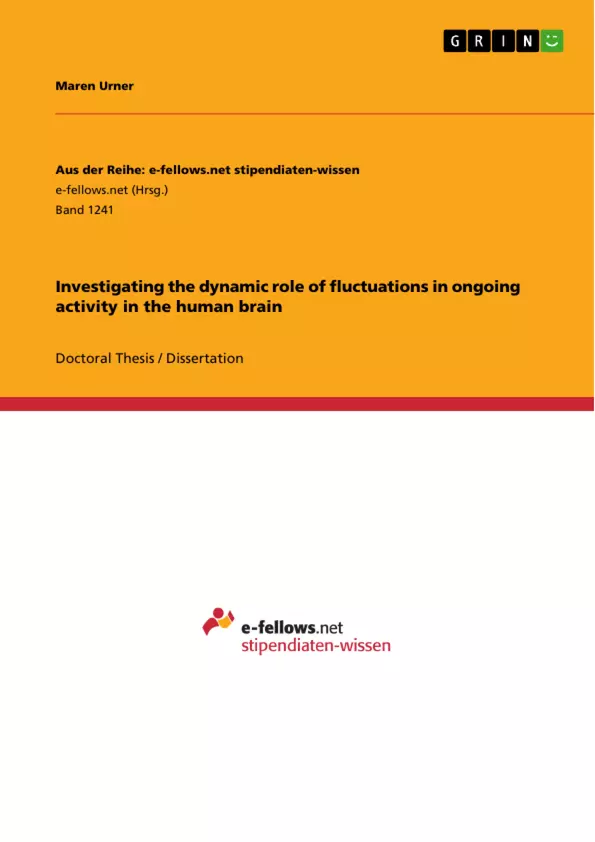Traditionally, the focus in cognitive neuroscience has been on so-called evoked neural activity in response to certain stimuli or experiences. However, most of the brain’s activity is actually spontaneous and therefore not ascribed to the processing of a certain task or stimulus – or in other words, uncoupled to overt stimuli or motor outputs. In this thesis I investigated the functional role of spontaneous activity with a focus on its role in contextual changes ranging from recent experiences of individuals to trial-by-trial variability in a certain task. I studied the nature of ongoing activity from two perspectives: One looking at changes in the ongoing activity due to learning, and the other one looking at the predictive role of prestimulus activity using different methodologies, i.e. EEG and fMRI. Finally, I ventured into the realm of inter-individual differences and mind-wandering to investigate the relationship between ongoing activity, certain behavioural traits and neuronal connectivity.
Inhaltsverzeichnis (Table of Contents)
- General introduction
- Spontaneous and evoked activity
- The study of spontaneous activity
- Electrophysiological research of ongoing activity
- Cortical states and response variability
- Predictive coding and predictive timing
- Neuroimaging research of ongoing activity
- Resting state fluctuations
- Vascular basis
- Neural basis
- Functional networks
- The functional role of spontaneous activity
- Perceptual domain
- Motor domain
- Cognitive domain
- Conclusions
- This thesis
Zielsetzung und Themenschwerpunkte (Objectives and Key Themes)
This dissertation investigates the dynamic role of spontaneous neural activity in the human brain, focusing on its contribution to contextual changes. It explores the nature of ongoing activity from two perspectives: how learning affects ongoing activity and the predictive role of prestimulus activity. The dissertation also examines the relationship between ongoing activity, individual differences, and mind-wandering.
- The functional role of spontaneous neural activity in the human brain
- The impact of learning on ongoing activity
- The predictive role of prestimulus activity
- The relationship between ongoing activity and individual differences
- The relationship between ongoing activity and mind-wandering
Zusammenfassung der Kapitel (Chapter Summaries)
Chapter 1 provides a general introduction to the topic of spontaneous neural activity, contrasting it with evoked activity. It explores the history and methods of studying spontaneous activity, including electrophysiological and neuroimaging approaches. The chapter also examines the functional role of spontaneous activity in various domains, including perception, motor control, and cognition.
Schlüsselwörter (Keywords)
Spontaneous neural activity, evoked activity, learning, prestimulus activity, individual differences, mind-wandering, electrophysiology, neuroimaging, functional networks, predictive coding, resting state fluctuations.
- Arbeit zitieren
- Maren Urner (Autor:in), 2013, Investigating the dynamic role of fluctuations in ongoing activity in the human brain, München, GRIN Verlag, https://www.grin.com/document/299815



